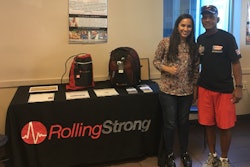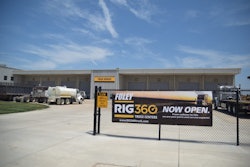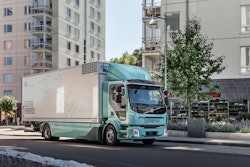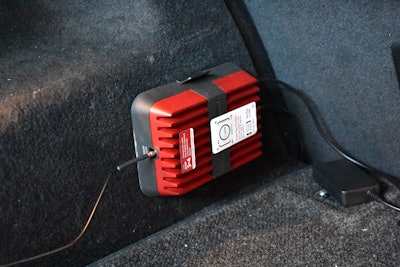 The Drive Reach signal booster has a power unit that clings to carpeted surfaces.
The Drive Reach signal booster has a power unit that clings to carpeted surfaces.Motor carriers are already preparing for National Truck Driver Appreciation Week, Sept. 9-15, by ordering giveaways and door prizes. Based on past experience, fleet executives say the most popular prize items for drivers are those they actually use on the road.
Blankets, leather gloves, clothing with reflective decals, electronics and accessories are among the type of products that increase comfort and convenience for road warriors. Some fleets will also give away top prizes to help drivers get quality time off the road by purchasing vacation packages and ATVs.
One item that could be popular is the new “weBoost” Drive Reach cell signal booster kit from Wilson Electronics. The company says the product works in all types of vehicles, including semi-trucks, to get a reliable signal and faster data. The Drive Reach is engineered to provide the maximum allowable gain of 50 dB under Federal Communications Commission standards.
 An outside antenna mounts to the roof and routes through any door opening.
An outside antenna mounts to the roof and routes through any door opening.Let’s face it, in our modern age, few things are as frustrating as waiting for a website to load or dropping calls.
Wilson Electronics recently sent me a Drive Reach kit for testing. My first impression was how simple and straightforward the installation is. You simply place a magnetic antenna on top of the vehicle and route the wire through any door seal. I chose to route the wire through the hatch of my SUV, but a truck driver could easily run the wire through a side door.
If the roof is made of aluminum, the kit comes with a sticker for the antenna. The antenna plugs into a booster unit, which is designed to cling to any carpeted or felt-lined surface. I stuck the unit to the side of my felt-lined trunk.
Next, I connected a power wire to the unit from my vehicle’s 12V receptacle and a wire from an inside antenna that is supposed to be mounted in proximity (between 18 and 36 inches) to where your cell phone will be used. I mounted it on the B-pillar on the driver’s side, next to the seat belt, with a Velcro strip that was included.
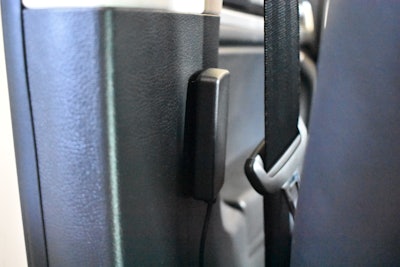 The inside antenna mounts in close proximity to where a cell phone is used.
The inside antenna mounts in close proximity to where a cell phone is used.The setup takes all of 5 minutes with clearly marked instructions and numbers on each of the separate items.
Like most vehicles, my SUV supplies power through the 12V receptacle only when the key is on. This made it easy to test the signal boost strength. Generally, I found that when my phone had three or four (out of five) bars of service, when I powered on my car the phone immediately jumped to 5 bars of service. So, it really works. When driving around town, my phone always had 5 bars of service courtesy of Drive Reach, as far as I can remember.
When leaving town, the signal booster did not always give me 5 bars. Generally, I found the device boosted my signal by about 100 percent. If I had one bar of service, I could get two or maybe three bars with a signal boost. If I had two bars, my boosted signal would come through at 4 bars.
If I had no signal at all, Drive Reach did not make a signal appear out of nowhere. I tested Drive Reach in several remote areas in Utah and Wyoming where I was lucky to get one bar of service on my own. If I got one bar, Drive Reach would boost my signal to as many as three bars. Three bars still wasn’t enough to browse the web or send files with any degree of speed, but it was enough to place a reliable phone call.
 The power cord connects to a 12V outlet and includes a USB charger.
The power cord connects to a 12V outlet and includes a USB charger.Based on the pricing of Drive Reach, it will be considered by drivers to be a premium gadget. If they decide to buy one on their own, truckers will need three components:
- The base Drive Reach (which I tested): $499.99, plus the
- OTR Antenna Truck Edition: $109.99
- Connector: $7.99
That brings the total for a trucker to $617.97. Would a driver buy one for himself or herself? Perhaps, but a motor carrier would not be willing to spend this much just to boost the cell signal of a mobile communications or telematics system they already had.
A carrier might still consider buying one for drivers to show appreciation, and based on my experience, it would be a gift they would hold onto and use regularly.



